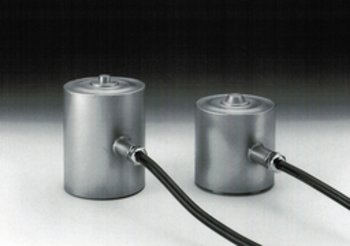
In 1958, a young Nils Eilersen was approached by his father to build an electronic scale for the family furniture business (www.eilersen.eu) in order to measure if the wood was dry enough to be used for furniture production. This project later turned out to be the basis for the foundation of the company Eilersen Electric A/S. After many hours of work, Mr. Eilersen had a working scale based on strain gage load cells but Mr. Eilersen did not find the strain gage technology accurate enough and too sensitive to overloads and shocks.
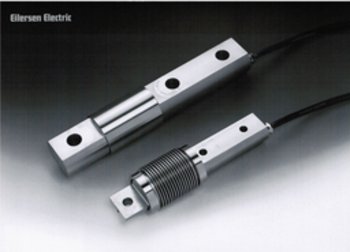
During his studies at the Technical University of Denmark, Mr. Eilersen was dedicated to looking for more robust and more accurate measuring principles. It was during his time at the university that he did his master theses on measuring capacitances.
After his studies, Mr. Eilersen was appointed development manager in a company developing industrial test equipment and he soon realized that the capacitive technology had a great potential in this business area. One of the company’s biggest sellers was an imported mechanical instrument for testing the pump pressure in diesel engines.
Mr. Eilersen then suggested the owner of the company to develop an electronic version of this test equipment but the owner of the company was not interested in this idea. As a result Mr. Eilersen then decided to start his own company.
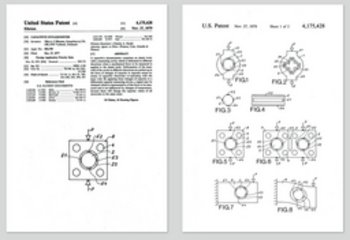
This led to the foundation of Eilersen Electric A/S in 1969 and as a result of hard dedicated work, Nils Eilersen was granted a patent in 1971 on measuring capacitances which was the measuring principle used in his electronic test equipment for diesel engines. The so-called “Diesel Tester” was used for measuring the pressure in the injection pumps in Diesel engines.
This product was a very big success and led to Robert Bosch GmbH buying an exclusive license to manufacture and sell the electronic diesel tester in 1972.
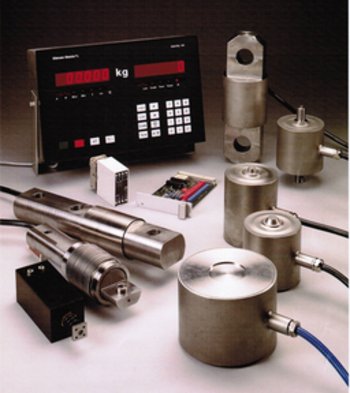
The many advantages of the capacitive load cell technology were clear, so Mr. Eilersen decided to develop a load cell based on the capacitive measurement principle.
As a result this development work, Eilersen supplied the first load cell to a local pharmaceutical company in 1976. This was one of the first installations using stainless steel load cells for process weighing.
The Eilersen load cells were based on a patented simple and efficient capacitive measuring circuit, followed by a patent on the mechanical design of the non-contacting capacitive sensor.
The capacitive load cells differed from the standard strain gage load cells in many ways as the load cells were characterized by the robustness which provided a much higher tolerance to overloads. Another important feature was the ability to withstand transient voltages while providing an output signal which was 20 times higher than strain gage load cells which was an advantage at a time when amplifiers were expensive and not very stable.
During the 1980’s then the company was growing steadily and many different types of analog capacitive load cells were developed and supplied to a growing customer base worldwide.
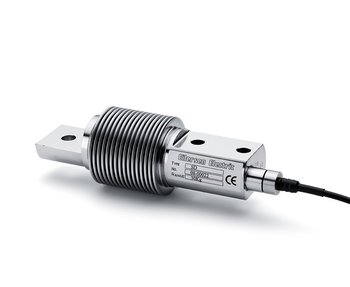
In the early 1990s, Eilersen’s engineers wanted to add further product benefits along with optimizing the production of the load cells. Through their own development of an ASIC and algorithm for temperature and force compensation, the group of engineers developed and improved the load cells. This marked the beginning of a new digital era for Eilersen.
The digital journey continued with a newly developed module series with full digital signal processing and a host of digital weighing indicators. The digital improvements led to Eilersen launching the SD load cell, the first digital load cell that excelled with very high accuracy and obtained OIML C6 approval.
The digitization of the load cells and instrumentation became the basis of a significant functional improvement of the entire product range. With built-in intelligence and digital benefits in terms of high accuracy and resolution, calibration independent of cable length, the ability to change load cell cables on-site and the well-known reliability, the first generation of digital capacitive load cells was a great success
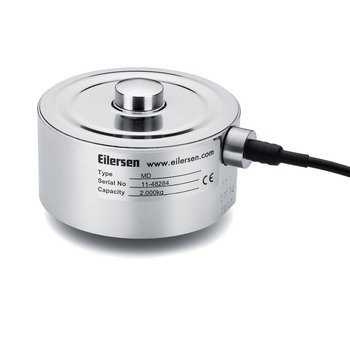
The digital success was the basis for Eilersen to continue expanding the program of digital load cells with compression load cells, tensile load cells, measurement of web-tension and not least a portfolio of single point load cells.
The expansion of the digital program brought new international customers from, among others, The United States, China, Australia, and Mexico. The new load cells put Eilersen on the world map as they were produced in stainless steel, were hermetically sealed with laser welding for IP68 and generally was characterized by high accuracy and robustness in all industrial environments.
The product optimization at Eilersen is, in this period, constantly evolving and the engineers in the company were working on achieving a complete product portfolio. At the same time the company’s production capacity was expanded and adapted to the increased demand.
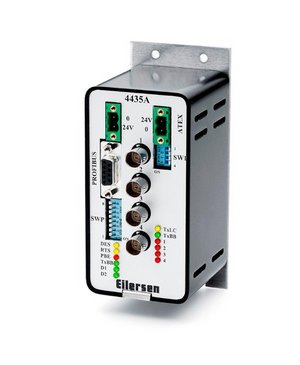
The pioneering digital technology that gave Eilersen digital recognition continued and resulted in the launch of a second and renewed generation of digital capacitive load cells from 2008 and in the following years.
The new generation of load cells consisted of a new series of weighing modules where all standard fieldbus interfaces were offered: Profibus DP, PROFINET, Ethernet IP and DeviceNet.
The focal point of the new instrumentation was the new development of the processor in the load cells and an optimization of the algorithm for temperature and force compensation, which is common to all improvements of Eilersen’s load cells.
With the new generation of load cells, Eilersen obtained ATEX-approval for installation in explosive atmospheres in zone 1, 2, 21 and 22.
After a long period of success based on innovation and hard work, Niels Eilersen passed the baton on to the next generation and left the responsibility of running the company to his son, Frederik Eilersen.
With the new management, the company sharpened its focus on becoming the leading supplier of load cells to the industry. The goal was to be the leading weighing experts for industrial applications.
The increased focus on load cells and weighing systems paid off as Eilersen in 2015 reached over 2000 global customers in more than 92 countries.
That was the foundation and motivating factor for continuing the production of high-quality groundbreaking weighing technology which is why the new weighing terminal 5024G was developed. The 5024G is a weighing terminal with a capacitive touch keyboard and OIML approval. The indicator is offered with firmware for a range of weighing applications.
The focused work continued and shortly after, the new single point loadcell type XBL was launched as the first of a third generation of digital load cells.
To service the many new customers in the international markets, Eilersen now had its own sales staff across Europe and The United States and initiated several international partnerships. These channels continuously ensure that customers are provided with relevant advice and support when using load cells from Eilersen.
In 2019, Eilersen celebrated 50 years of experience with load cells from the establishment of Eilersen Electric A/S. With half a century of expertise and great international progress, Eilersen had created a true success story. New milestones led to another expansion, and Eilersen moved into a new domicile in Kokkedal, north of Copenhagen.
In the following years, a new generation of hygienic load cells was developed which is ATEX and IECEx certified. The development of hygienic load cells was based on a several requests from customers within the food, pharma and biotech industries which made Eilersen the preferred supplier for leading global companies within food and pharmaceutical industry.
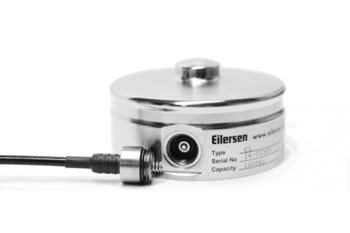
For instance, during the COVID-19 crisis, Eilersen supplied load cells to the three leading producers of COVID-vaccines. The accuracy, reliability and the flexibility made Eilersen the preferred supplier in a time where the production of vaccines had to start quickly with a high uptime, without having to compromise on quality or product safety.
In 2021 Eilersen took the first step in a crucial transformation of the production: the first robot was installed to automate the production of load cells, thereby streamlining, and keeping up with the increasing demand.
Eilersen Electric A/S is founded by Nils Eilersen
First patent on capacitive measuring principle is granted
The first product based on a capacitive measurement principle is sold to Bosch Gmbh
First stainless steel load cell for tank weighing
Second patent on capacitance measurement
First patented analog capacitive load cell is granted
Eilersen Electric SA is founded in Switzerland
Patent on digital capacitive load cells is granted
First generation digital capacitive load cells
Third patent on digital capacitance measurement is granted
Patent on capacitive single point load cell is granted
Second generation digital capacitive load cells
Installations in more than 85 countries worldwide
Third generation digital load cells
ISO 9001:2015 and IECEx certifications
Fourth generation digital load cells released